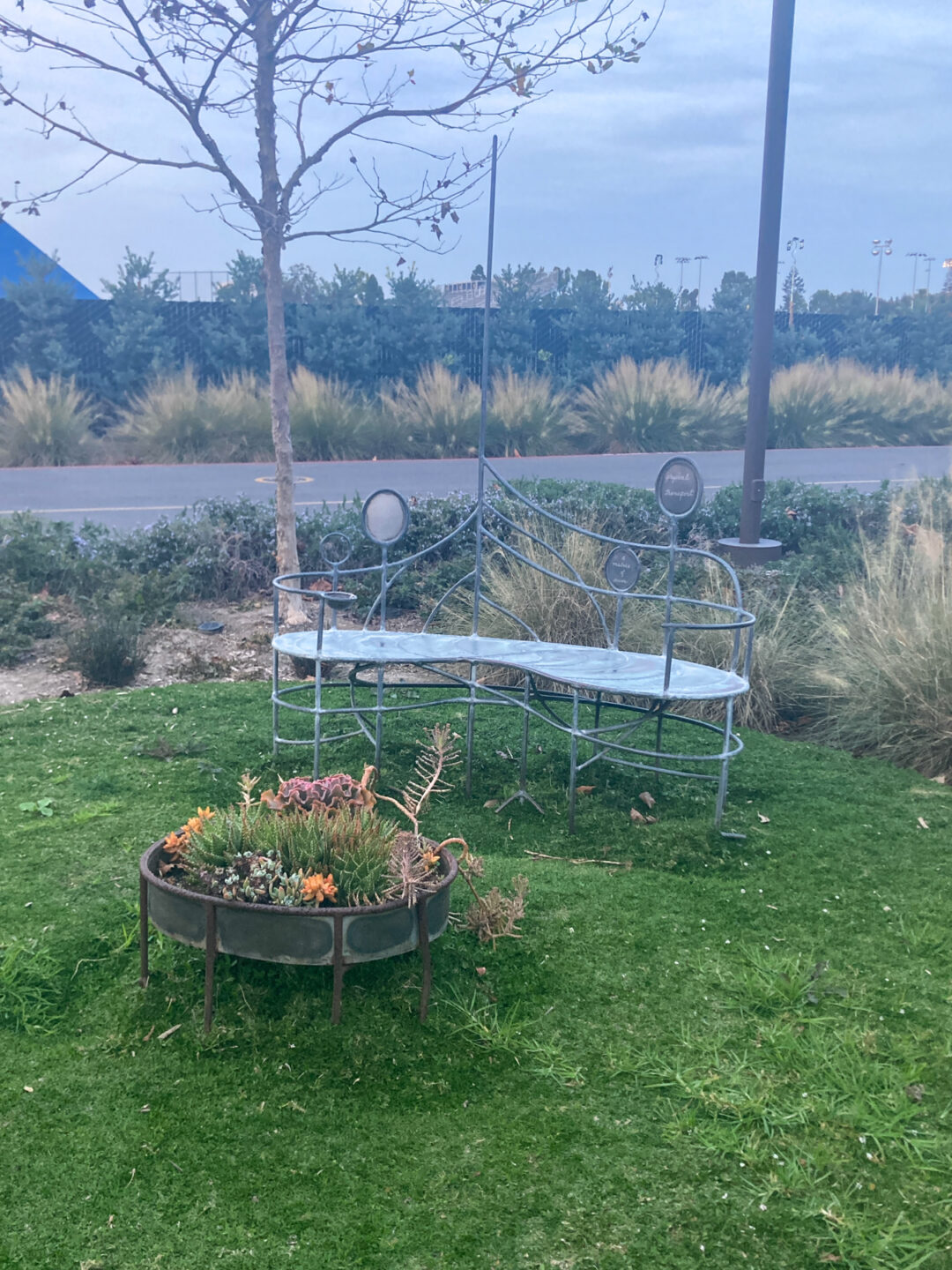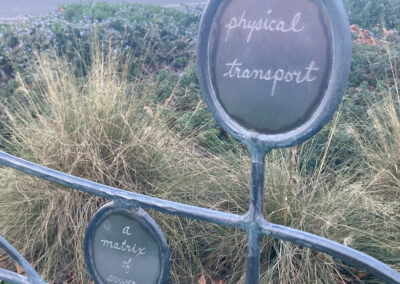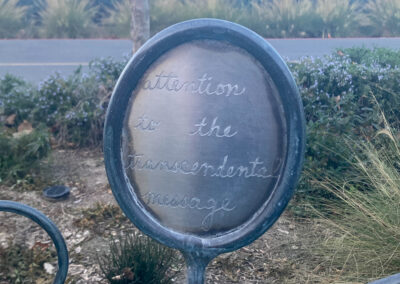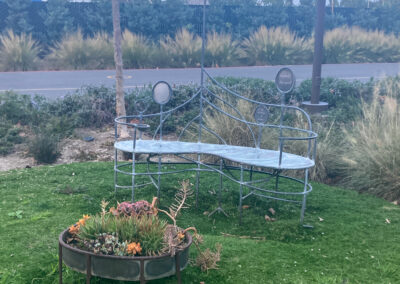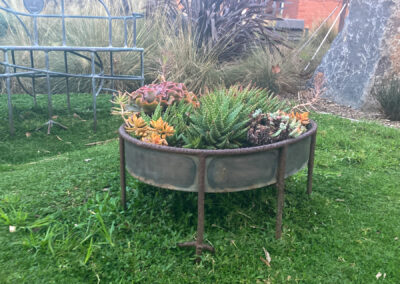Lovers Bench for a New Millennium
Eugenia Butler
Lovers Bench for a New Millennium was inspired by a visit to the Huntington Library, in Pasadena, where Eugenia Butler saw the original drawings from William Blake, based on John Milton’s Paradise Lost. In one such drawing, entitled Raphael Warns Adam and Eve, the main figures are depicted in a romanticized neo−Gothic setting. From this, Butler created a bench and stool where the Angel Gabriel could warn Adam and Eve about their behavior in the Garden of Eden. Created with a variety of metals, the sinuous shapes and curves of the bench’s design echo Blake’s ethereal imagery. Replete with motifs referencing love, sadness, and the balance of male and female, the settee is a metaphor of a special place for lovers in a disturbed time. One such element is a spire, growing out of the filigree and forming the back of the bench, which stretches upward, the tip measuring seven feet from the ground. Butler described the vertebral rod as representing the thread by which all life hangs. Attached to one side of the bench is a copper “tear cup”, because, as Butler once said, “…part of love and lovers is tears…if we can include that in our definition of love, we have a greater capacity to love and to accept love in our lives.” Additionally, medallions are suspended along the back of the bench, covered with phrases alluding to the attributes of human love. The double curve of the bench seat refers to the Yin−Yang symbol, referencing one of Butler’s favorite sources, the I Ching. Placed in front of the bench is a low table, which is filled with grass, as a reference to the Garden of Eden. This soft, turf−carpeted surface covering is surrounded by iron and copper elements that reiterate the bench motifs, such as iron roots and tendrils that extend into the ground. This deliberate, literal and symbolic connection with the earth was a new and important motif for Butler. Lovers Bench for a New Millennium also marked the first time that Butler joined the two facets of her oeuvre in a seamless conception. The sculpture integrates literary sources and art history references with the elicitation of tactile and emotional responses. Eugenia Butler was an internationally recognized artist, teacher, and scholar whose work has been collected by prestigious institutions such as the Los Angeles County Museum of Art and the Armand Hammer Museum. In the late 1960s, Butler’s work was included in early exhibitions of Conceptual and post−Minimalist art, such as Electric Art at the University of California, Los Angeles; Prospect 69 at the Kunsthalle Düsseldorf, Germany; and Concept Art at the San Francisco Art Institute. She operated in the same circles as Robert Barry, Douglas Huebler, Joseph Kosuth, and Lawrence Weiner. Butler received a Bachelor of Arts in 1975 from the University of California, Berkeley. In 1990 she was awarded a Dorland Mountain Artist Fellowship and, in 1991, a Visiting Artist Award from the Rotterdam Arts Council in Holland.
Steel, stainless steel, brass and copper details
Bench: 85 x 62.5 x 27 inches
Table: 18 x 28 x 23.5 inches
GET DIRECTIONS »

